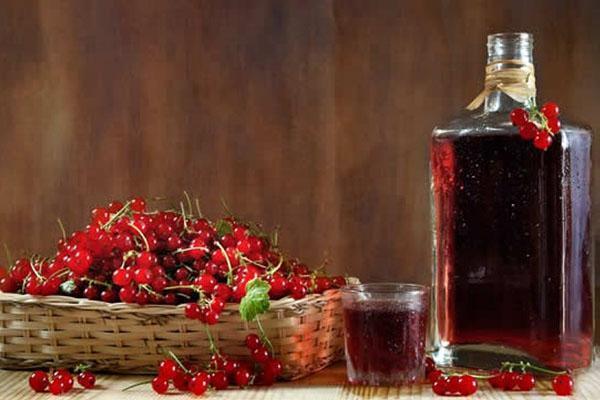Cooking homemade currant wine
 Many gardeners collect large quantities of berries during the summer season. Making homemade currant wine is a good way to process surplus crops. Homemade wine tastes better than a drink bought in a store. In addition, you will be sure of the naturalness of homemade wine, because you can make it yourself.
Many gardeners collect large quantities of berries during the summer season. Making homemade currant wine is a good way to process surplus crops. Homemade wine tastes better than a drink bought in a store. In addition, you will be sure of the naturalness of homemade wine, because you can make it yourself.
Manufacturers, in order to reduce the cost of their product, add sugar substitutes to wine, which have a bad effect on the liver, kidneys and the digestive system. The wine obtained by reconstitution of the concentrate develops an unpleasant aftertaste. The only chemical process that the homemade drink will be subject to is the sugar fermentation process, so the wine will be healthy and tasty.
Making homemade wine from berries
To make homemade blackcurrant wine you will need:
- three-liter glass jar;
- 1.2 kg of currants;
- 200 g raspberries;
- 1.5 kg of sugar;
- latex medical glove;
- cord or elastic.
Currant and raspberries need to be kneaded by hand. Squeeze the juice well through cheesecloth, and strain the cake through a sieve.
Berries must not be washed before processing. On the surface of the currant there are natural yeast, without which the fermentation process will not begin.
Currant juice is an acidic environment in which yeast does not actively reproduce. Fermentation is slow. Raspberries are added to wine in order to accelerate the growth of yeast. 1 kg of sugar is also added to the jar. Sugar must be mixed thoroughly.
The container with wine is covered with a latex medical glove to stop the oxygen supply. If the juice oxidizes, then instead of wine, you get berry vinegar, which can be added to salads or marinades.
In order to completely exclude the ingress of oxygen into the berry wort, the latex glove is tied with a cord. A container with wort is placed in a cool room for a day, and then placed in a room with a temperature of 22ABOUTC, where the wort ferments for two weeks.
During active fermentation, the glove can be ripped off, and then the wine will pour onto the floor. Place wine containers in bowls to avoid spilling wine.
After two weeks of fermentation, another 500 g of sugar is added to the jar of wort to continue the process of forming alcohols. After another week of fermentation, the wine will be ready. It will need to be filtered and poured into glass bottles. Before bottling, you can adjust the sweetness of the wine by adding sugar to the strained drink to taste.